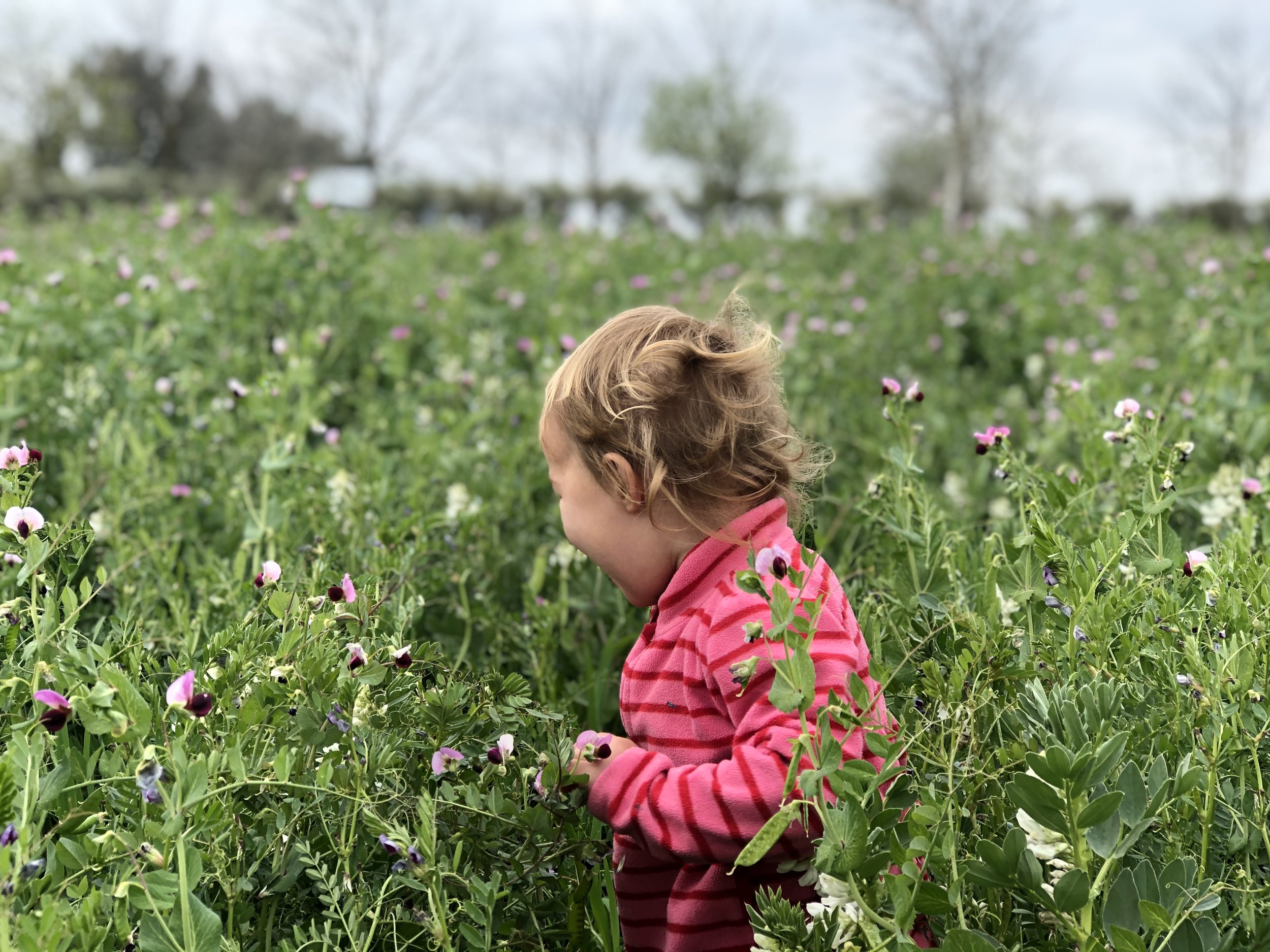What is regenerative agriculture?
Regenerative agriculture is an eco-friendly farming approach that focuses on enhancing ecosystem health and productivity. It prioritizes practices like soil health improvement, biodiversity promotion, water management, and reduced chemical use. By emphasizing holistic management and integrating livestock, regenerative agriculture aims to create sustainable and resilient farming systems that benefit both the environment and communities, contrasting with conventional practices that may degrade the soil and harm ecosystems over time.
How do we incorporate this practice here at Belle and Bug Farms?
To start with we minimize our use of chemical sprays. In fact, the only spray we use is a mineral fungicide copper spray in the dormant winter months to protect our fruit trees from a variety of diseases and pests—which is approved for organic practices.
Next, we use applications of compost instead of synthetic fertilizer to provide the nutrients our trees, pasture, and garden plots need. In addition, regular use of woodchips as a mulch. Mulch does multiple things at once. It provides weed suppression, holds moisture which keeps the soil cooler in the summer months, and feeds the microbiology within the soil.
We also use cover crops whenever possible between planting rows and orchard alleys. In the winter this might be a combination of peas, beans, vetch, oats, etc., and in the summer a sudan grass or mustard. However, in most areas, we have established a permanent pasture mix of legumes like cover and perennial grasses so that we don’t have to disturb the soil life with tillage and are ready for whenever we introduce livestock into our operation.
Additionally, we have reduced or eliminated tillage- also known as discing, plowing, harrowing, etc. This is an important aspect of regenerative agriculture because each time soil is tilled it destroys the microbiology living in the top few inches of soil and releases carbon into the atmosphere. Whereas an established healthy ecosystem with a thriving microbiological population will do the opposite, providing a carbon sink. We have even moved to a no-dig, no-till practice in our garden plots. When a bed is ready to be taken out and replanted we simply chop or pull the old plants, add a new layer of compost, and plant directly into the compost.
There are many more things we can do to incorporate environmentally friendly practices into our farm as we work towards a more sustainable operation and will continue to experiment and learn what works best for us and our way of life.

